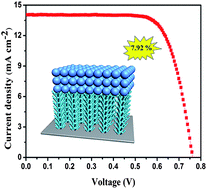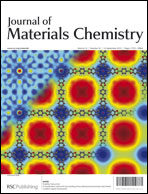A novel double layered photoanode consisting of oriented hierarchical anatase TiO2 nanowire arrays (HNW) and nanoparticles (NP) has been successfully fabricated on a Ti-foil substrate via a two-step hydrothermal and screen-printing process, respectively. Compared to a NP based cell, the photovoltaic performance of the TiO2 HNW cell highlights several outstanding properties, including superior light scattering, rapid electron transport and lower electron recombination rate. Furthermore, the effect of the TiO2 NP film thickness (top layer) on the power conversion of the DSSCs has been investigated in detail. The DSSC based on a Ti/TiO2 HNW + NP photoelectrode with a total thickness of 31 μm (HNW: 13 μm; NP: 18 μm) shows the highest power conversion efficiency of 7.92%, which is remarkably higher than those of 13 μm HNW (4.52%), 18 μm NP (6.50%) and 31 μm NP (5.99%) photoelectrodes. The enhancement of the efficiency for the double layered photoanode based cell compared to the single NP is mainly attributed to better light scattering capability, faster electron transport and lower electron recombination for the former.

You have access to this article
 Please wait while we load your content...
Something went wrong. Try again?
Please wait while we load your content...
Something went wrong. Try again?


 Please wait while we load your content...
Please wait while we load your content...